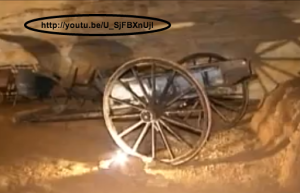Writing anything to do with history forces one to study the past. Unfortunately, this means studying both the achievements of mankind and its grimmer, less savory activities. This last, especially when viewed from modern sensibilities, can be disheartening.
Slavery was a concept I just could not get my head around, let alone put into a fictional adventure. The logistics alone baffled me: how could one force another to do one’s bidding. Why didn’t the enslaved just run away?
I turned to “Slaves and Warriors in Medieval Britain and Ireland” by Dr. David Wyatt (Cardiff University History Department) for a possible answer.
The essence of Dr. Wyatt’s book is given in its abstract: “The purpose of this monograph is to highlight the extreme social and cultural significance of slavery for those societies. The analysis does not focus upon economic conditions or even, necessarily, upon the plight of the slave. Rather, it concentrates upon the lifestyle, attitudes and motivations of the slave-holders and the slave-raiders in these warrior-centered communities. Through the employment of comparative anthropological perspectives this study explores the violent activities and behavioral codes of Britain’s war bands and illustrates the importance of slave raiding/holding for the establishment of power, identity and notions of manhood. In particular, it highlights how the rape, abduction and enslavement of women constituted powerfully symbolic acts for societies which equated prowess, prestige and honor very much with female protection and guardianship. Indeed, one problematic result of the continuing focus on medieval slavery as a means of economic production is that this has ensured an unhelpfully narrow research focus concentrating on male slaves involved in agricultural production. Yet, the majority of slaves in the medieval period would, most likely, have been females living and toiling in the domestic sphere and this is highly significant. Furthermore, this book highlights, more generally, how the dichotomy between slavery and freedom was fundamentally important for defining social hierarchy within the medieval communities of England, Ireland, Scotland and Wales.”
This is heavy stuff. My take-away as far a writing fiction for such an age is as follows:
This stage of society is defined by the family and immediate tribal members. Hostilities over territory, livestock and resources demanded a warrior mentality for Darwinian survival.
Furthermore, protection depended on connections. To survive, allegiances must be made with nearby neighbors (and family members). This formed hierocracy determined by martial skills. Hierocracy also demanded trappings of status, including the power to enslave. Owning slaves thus became a social symbol of power (as well as an economic resources and, in the case of female slave, sexual recreation). Better to travel outside of one’s neighborhood and collect slaves (and booty) to prove one’s prowess in battle than to fight it out for supremacy with one’s neighbors (another Darwinian factor).
This defines the identity of slaves. These peoples fell outside the realm of the allegiances (or social structure) in which one participated. In the context of medieval life (and certainly other times/ages), this meant anyone living beyond one’s narrow world.
To put it more bluntly, anyone outside of one’s connections was subject to enslavement, attack, plunder and murder.
A slave then was in a social situation where all the non-slaves around him/her had connections and/or allegiances to his/her owner. Flight, if successful, would most probably only result in enslavement in another region of different connections/allegiances.
(Travel between “regions” depended on allegiances between high status individuals of different regions. Those granted travel rights would be easily identifiable characters such as messengers, bards, or druids/priests.)
Slavery was a social institution, driven by a warrior culture. And it was connections that defined one’s place in society.



